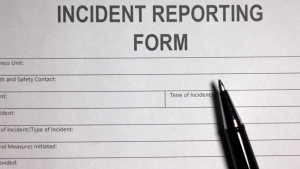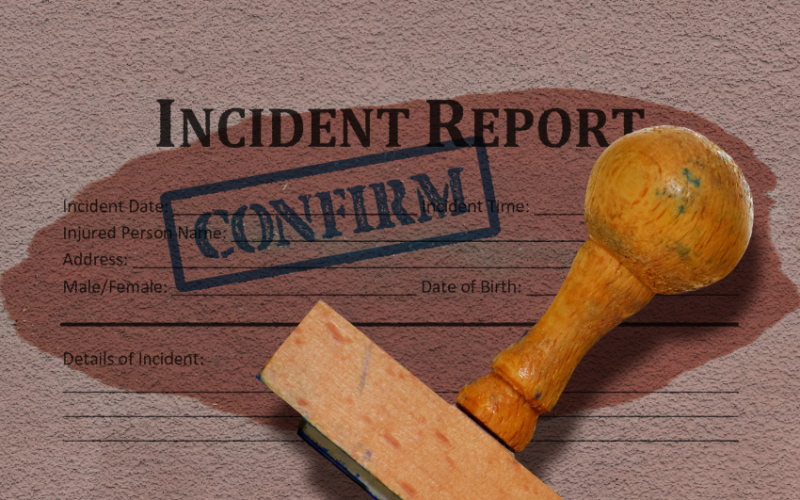Incidents can happen anywhere and at any time. From workplace accidents to road mishaps, it is important to document the details of an incident for future reference. Writing an incident report is crucial to ensuring that all parties involved in an incident get the necessary support and assistance. It not only helps identify the problem’s root cause but also assists in taking corrective measures to prevent similar incidents from happening again. This blog will cover everything you need to know about writing an incident report, including why it’s important, what should be included, how to prepare for it, and how to write one. We will also touch upon some alternatives to an incident report that you could consider using in certain circumstances. So let’s dive into the nitty-gritty of writing an effective incident report!
What is an Incident Report?

An incident report is a document that outlines details of an unexpected event or situation that occurs in a workplace or other setting. The report typically includes information such as the date and time of the incident, what happened, who was involved, and any actions taken to address the situation. Incident reports are often used by employers to track and analyze workplace accidents or incidents in order to identify potential safety hazards and prevent them from happening again in the future. They can also be used as legal documentation if necessary. Overall, incident reports are important for maintaining safety and accountability in various settings.
Why is Writing an Incident Report Important?

Incident reports are crucial as they record the specifics of an incident that could have legal or financial implications. They assist in identifying trends to prevent future incidents and can serve as evidence in court. Additionally, well-written reports show accountability and transparency.
What Should be Included in an Incident Report?

An incident report is a critical document that provides an overview of an event or issue that has occurred. It is important to include specific details about the incident in order to provide a clear and accurate account of what happened. Here are some key elements that should be included in an incident report:
- Date and time of the incident
- Location of the incident
- Description of the incident, including what happened and who was involved
- Any injuries or damages that occurred as a result of the incident
- Names and contact information of any witnesses or individuals involved in the incident
- Any actions taken following the incident, such as medical treatment or disciplinary action
It is also important to ensure the incident report is written clearly and concisely, with all relevant information included. This can help ensure that the incident is properly documented and addressed.
How to Prepare to Write an Incident Report?
1. Gather All Relevant Information
In order to write an effective incident report, it is important to gather all relevant information about the incident. This includes information about what happened, when, where, and who was involved. It is also helpful to collect any physical evidence that may be related to the incident. This could include things like surveillance footage, photos, or eyewitness accounts.
2. Identify the Cause of the Incident
Once you have gathered all of the relevant information, you can begin to identify the cause of the incident. Was it due to human error? Equipment failure? Natural causes? Once you have identified the cause of the incident, you can start developing a plan to prevent similar incidents from happening.
3. Determine the Impact of the Incident
You need to determine the impact of the incident. This includes assessing any damage that was done and determining how many people were affected. It is also important to consider the financial impact of the incident and whether or not there will be any legal implications.
How to Write an Incident Report?

Before you start writing an incident report, make sure you have all the basic facts about the incident prepared. This includes who was involved, what happened, when it happened, and where it happened.
Once you have all the facts prepared, start writing your report by explaining the sequence of events step-by-step. Include as many details as possible so anyone reading your report can understand what happened.
After explaining the sequence of events, analyze the incident to determine what went wrong and why. This analysis will help you prevent similar incidents from happening in the future.
Describe any injuries that were sustained during the incident. Even if there were no injuries, this section is still important as it shows that you are taking the incident seriously and are concerned for the safety of those involved.
Once you have finished writing your report, proofread it to ensure that there are no errors or typos. This is important because an accurate and well-written report will be taken more seriously than one with errors in it.
Alternatives to an Incident Report

Incident reports are a common way for small businesses to document and track workplace accidents, injuries, and other incidents. However, there may be situations where an incident report is not the most effective or appropriate tool. Here are some alternatives to consider:
1. Verbal communication
Discussing the incident with the relevant parties may be more efficient than filling out a formal report.
2. Safety checklists
If incidents occur regularly, creating a safety checklist can help prevent future incidents by identifying and addressing potential hazards before they become a problem.
3. Digital tracking tools
Utilizing technology such as electronic forms or mobile apps can streamline the reporting process and make tracking incidents in real-time easier.
It’s important to assess each situation individually and choose the best method for documenting and addressing workplace incidents.
Conclusion
In conclusion, writing an incident report is an essential skill to have in any workplace. It provides a proper record of the event and helps identify areas that need improvement. The report should be factual, concise, and clear, with all the necessary details included. Preparing beforehand and following a structured format can make the process much smoother. In some cases, other alternatives like verbal reports or corrective action plans may also be appropriate. To learn more about writing incident reports effectively and efficiently, check out our detailed guide on how to write an incident report.










